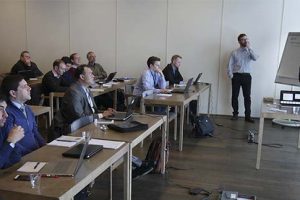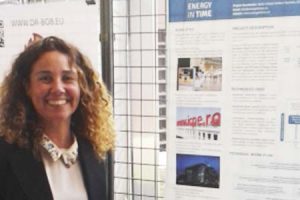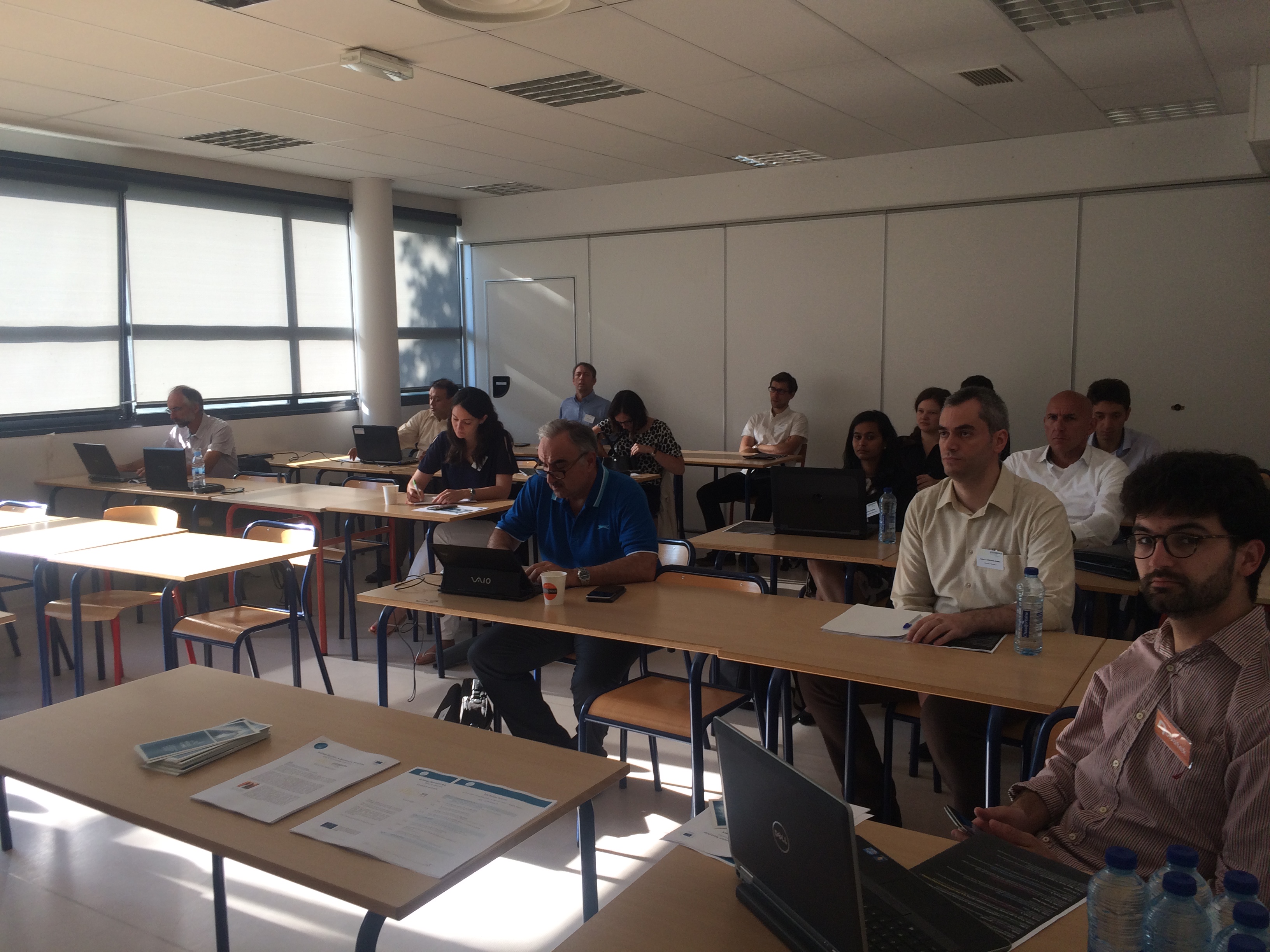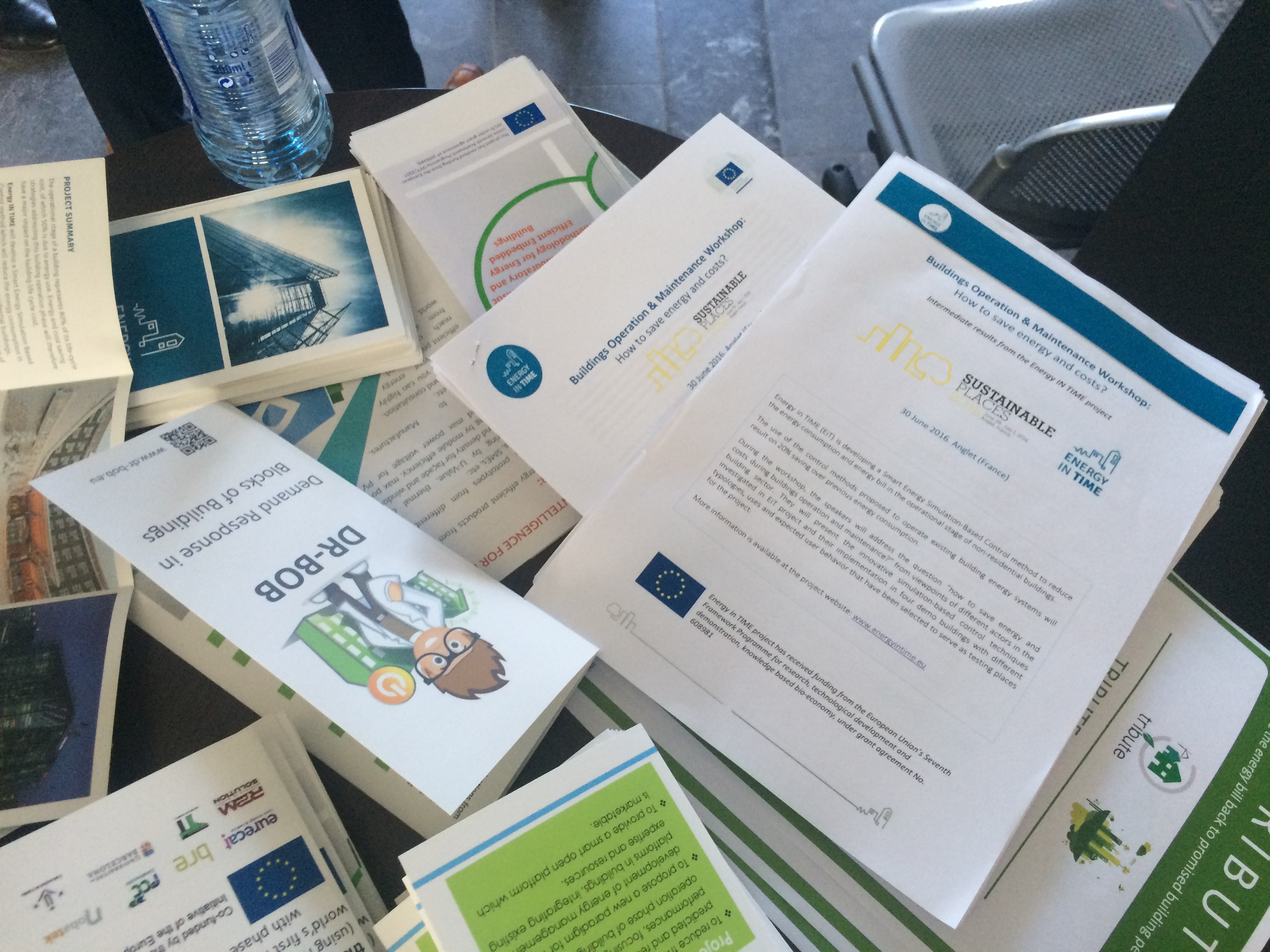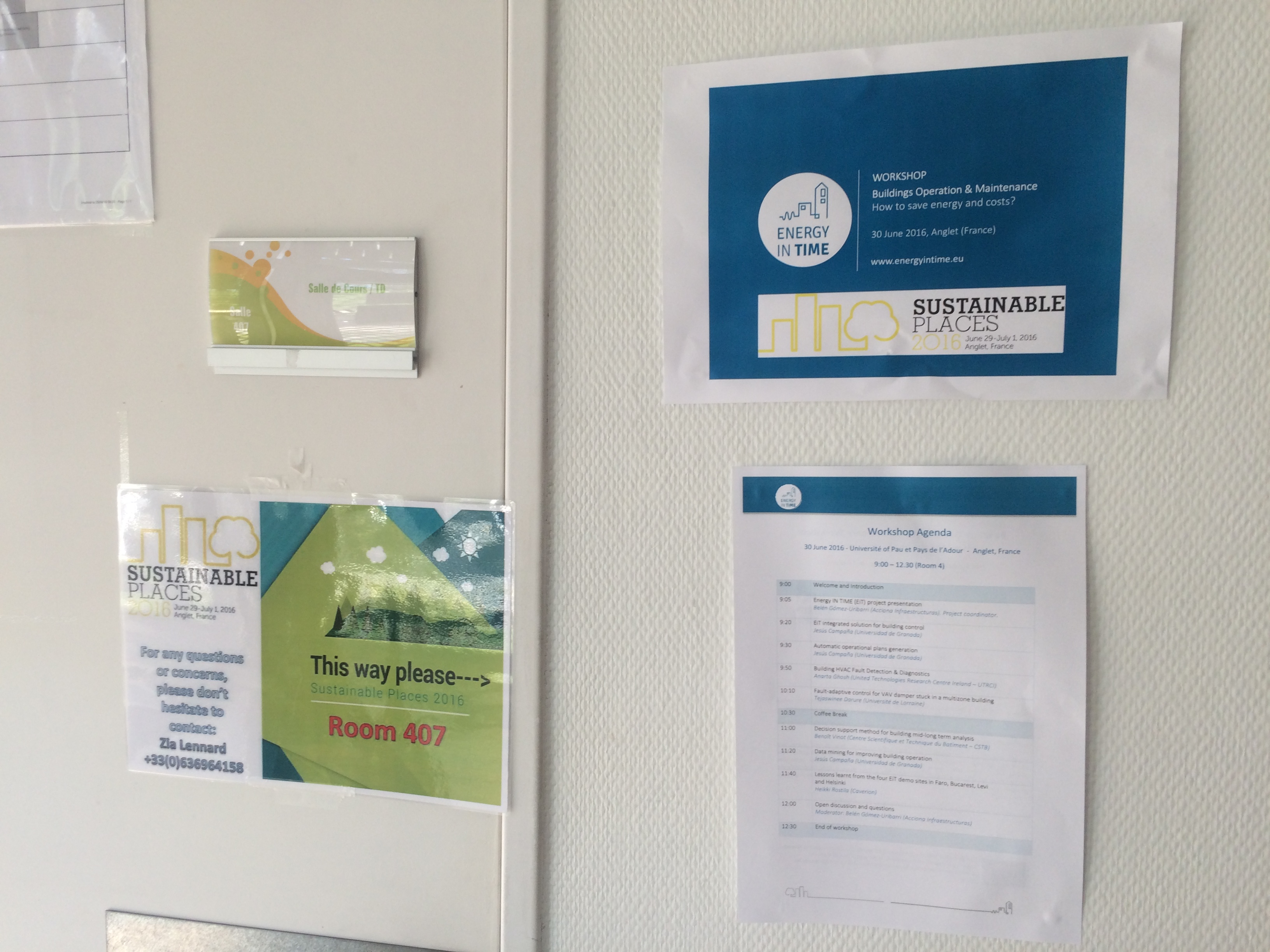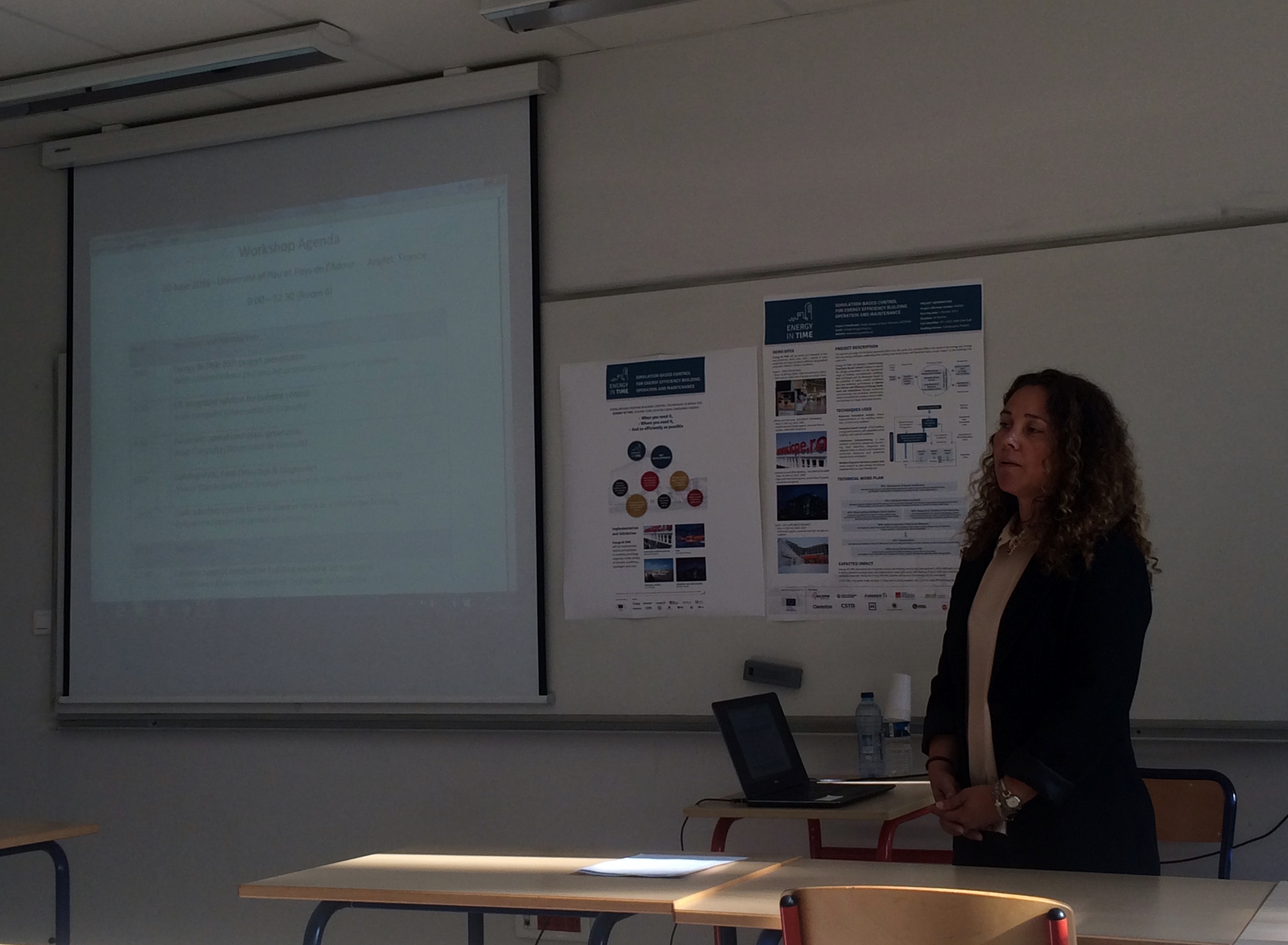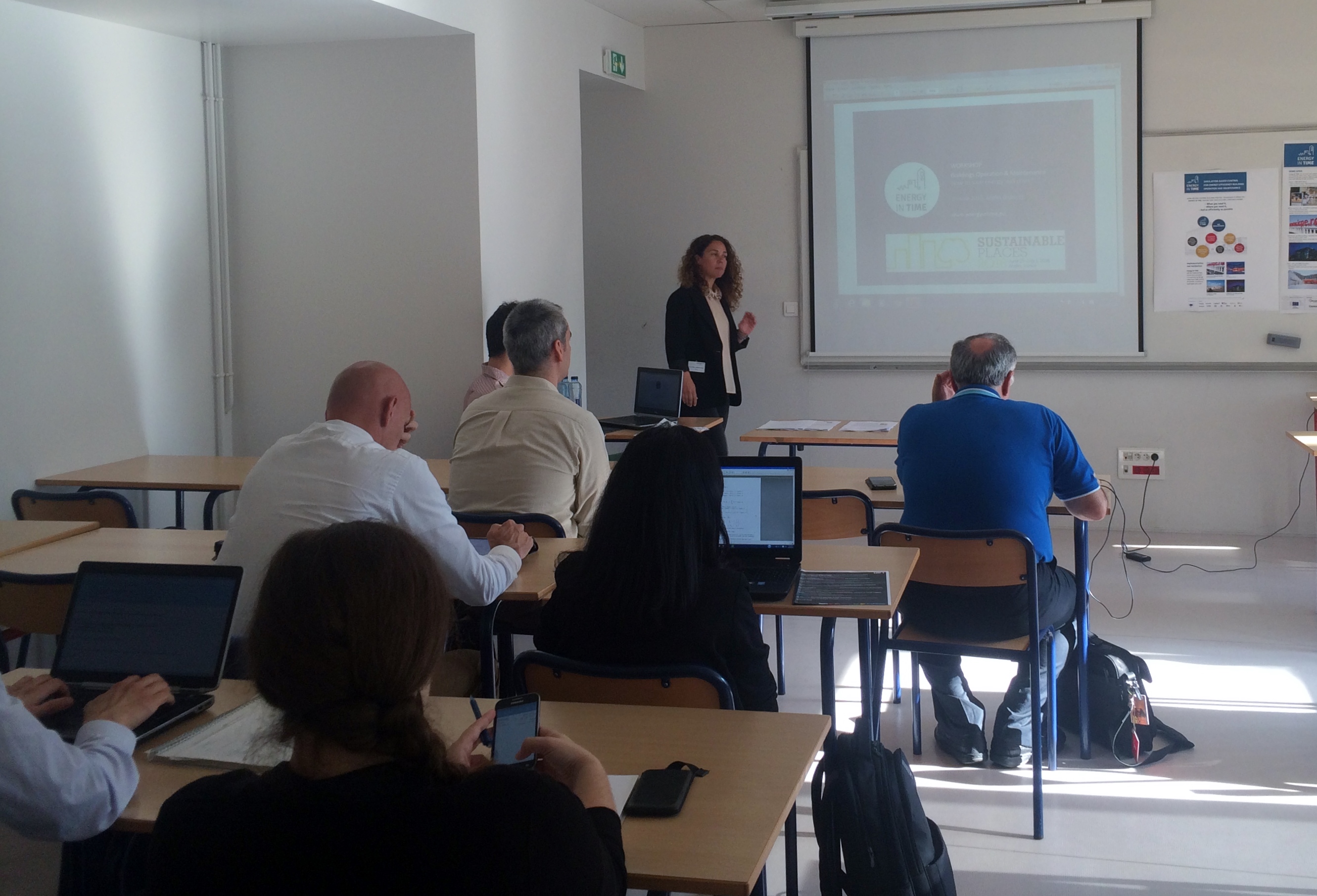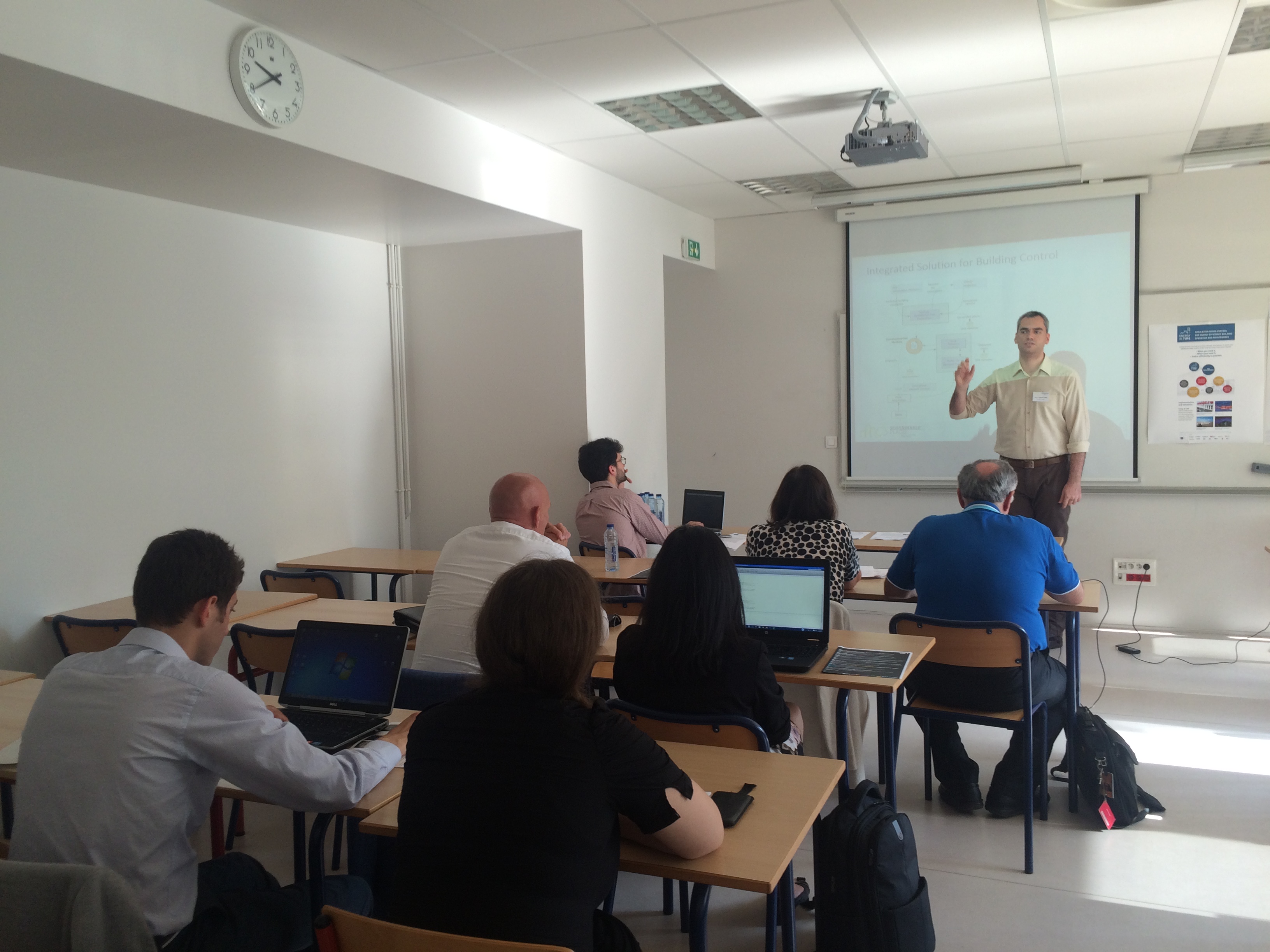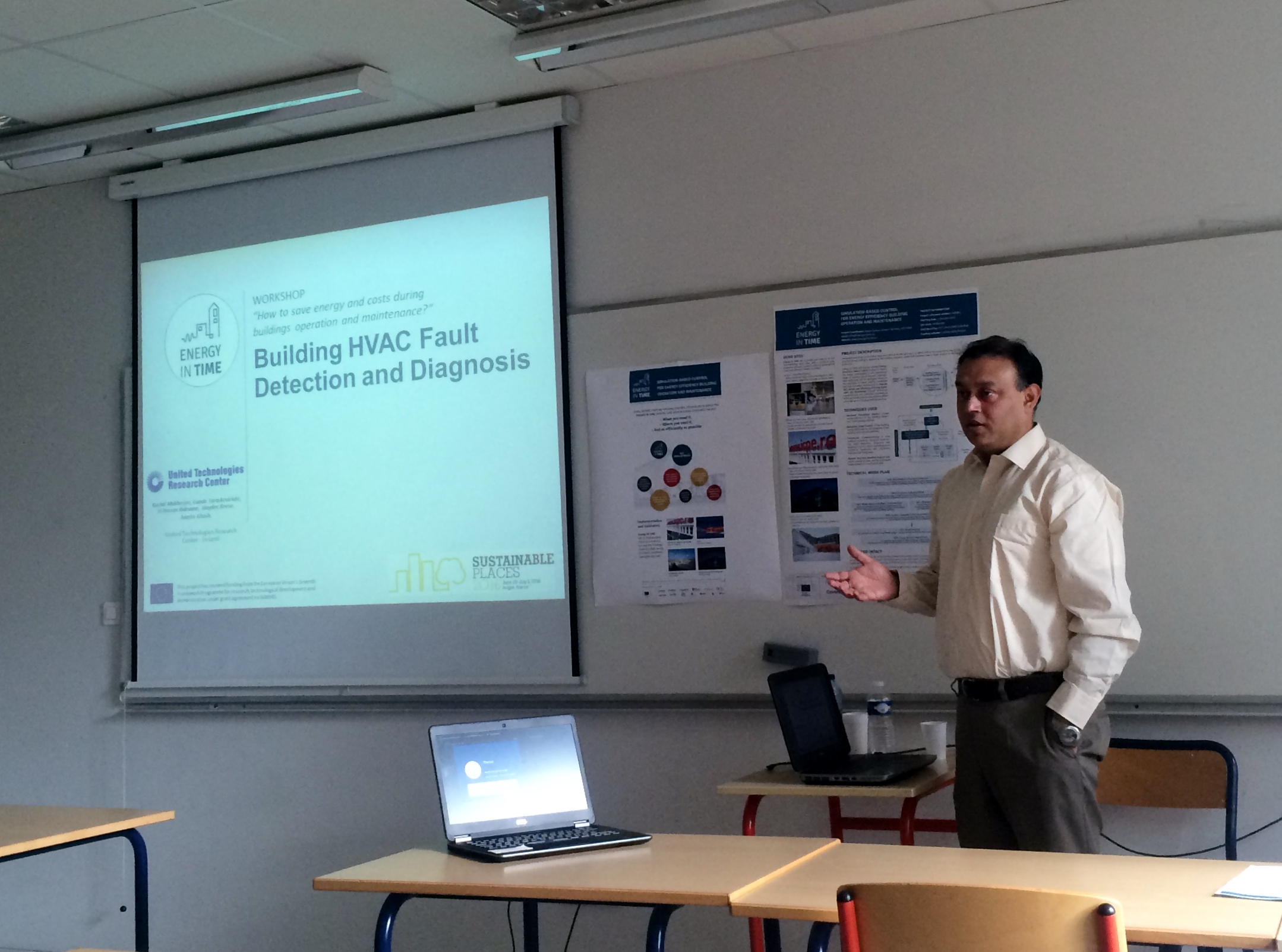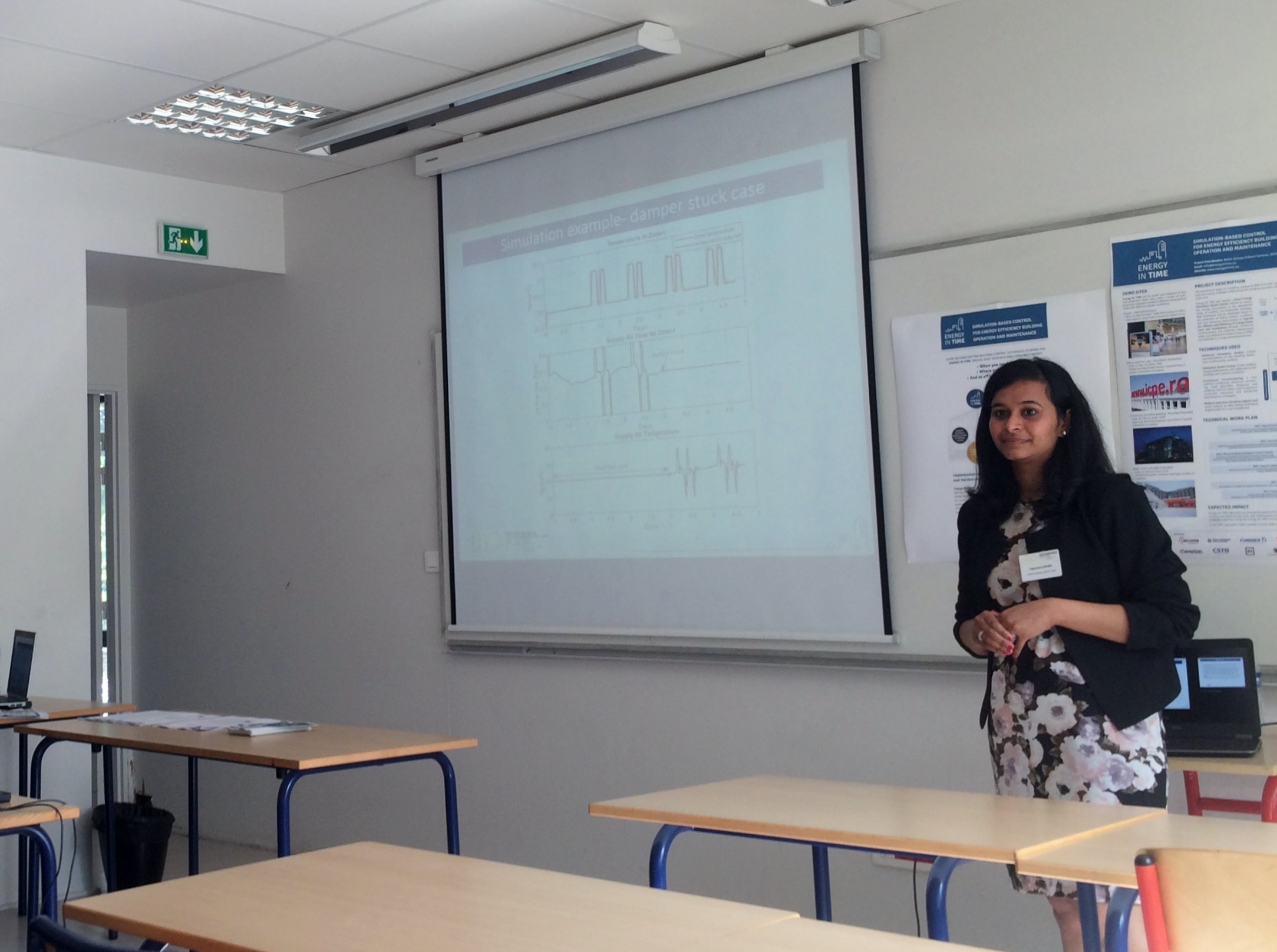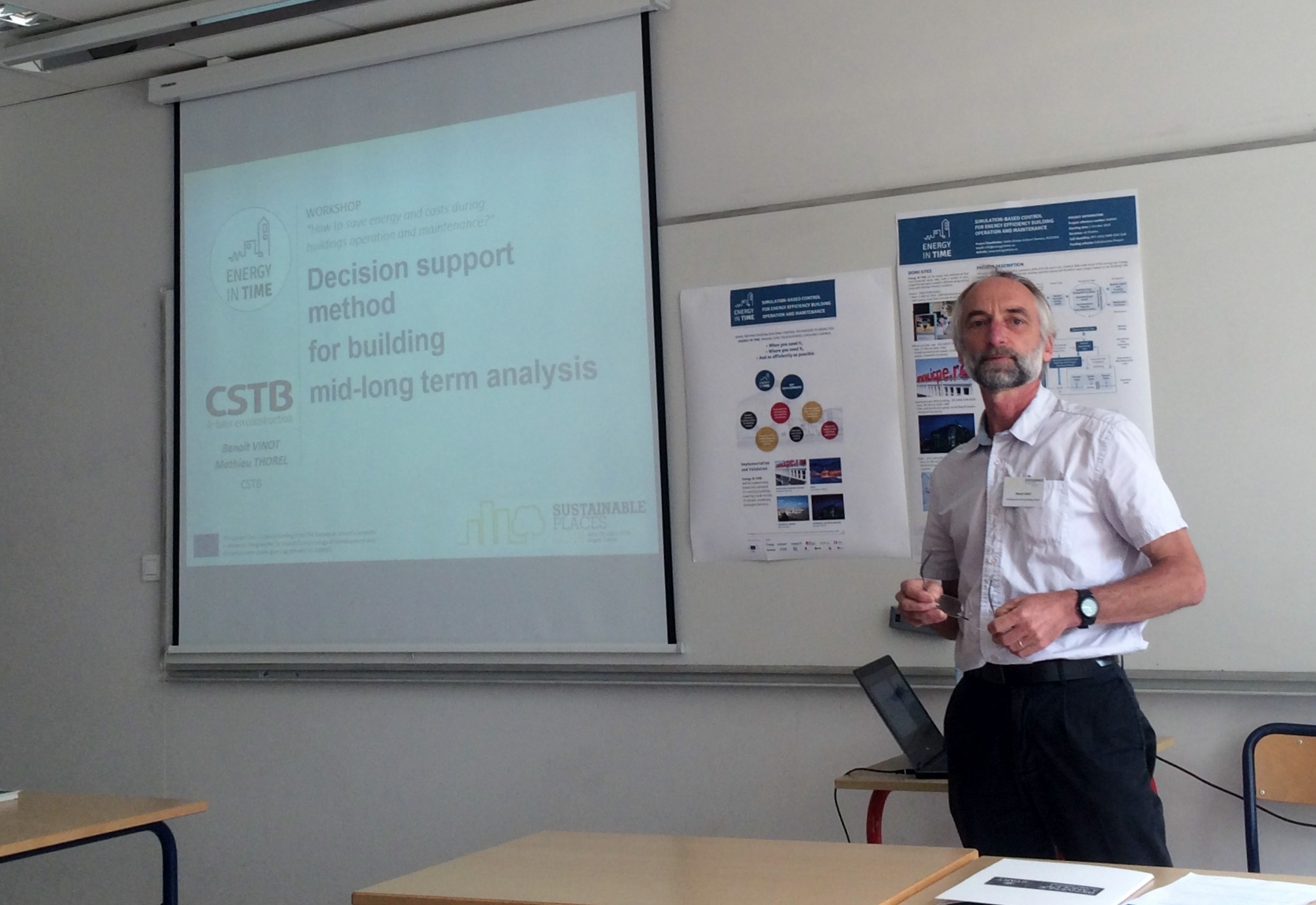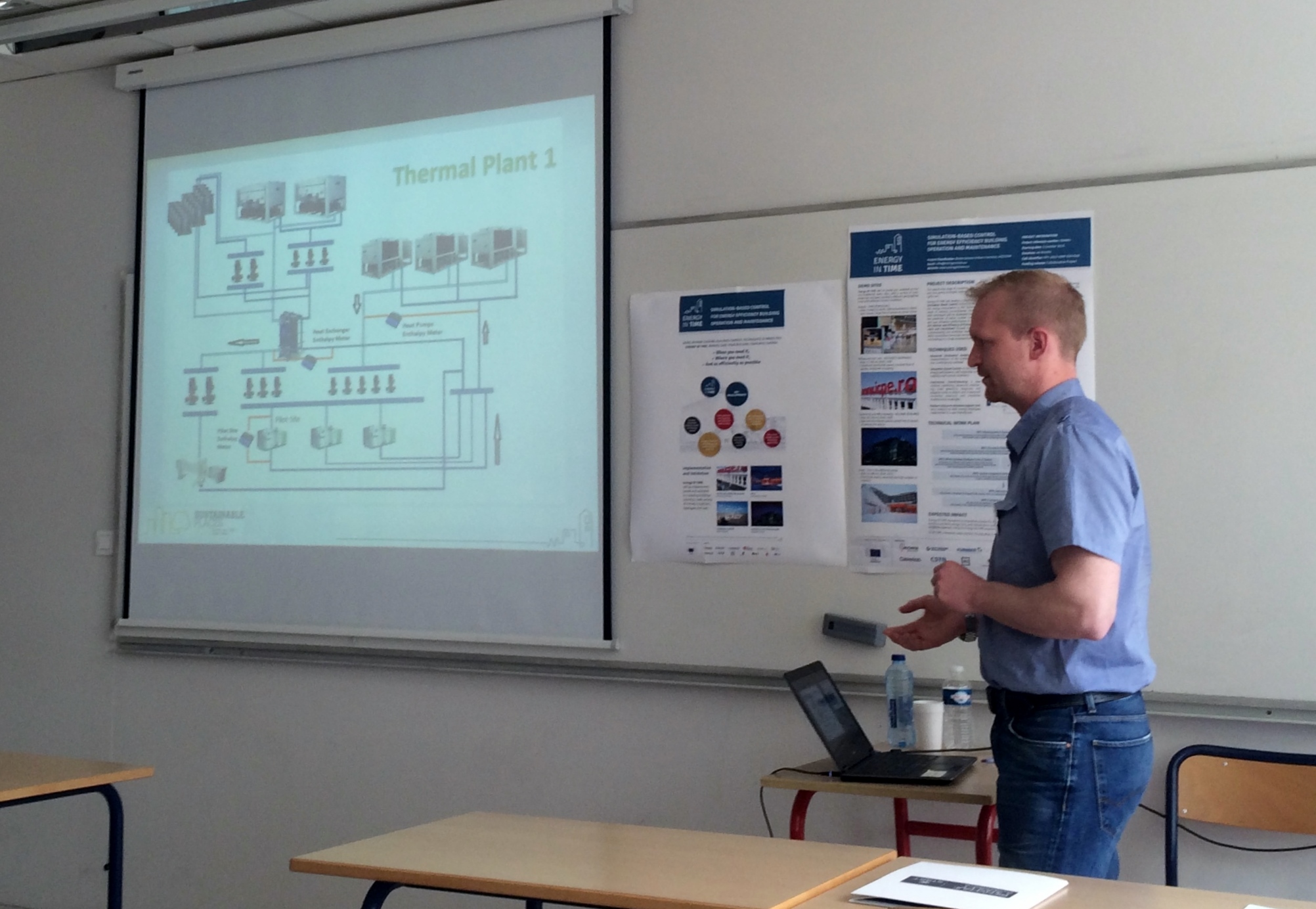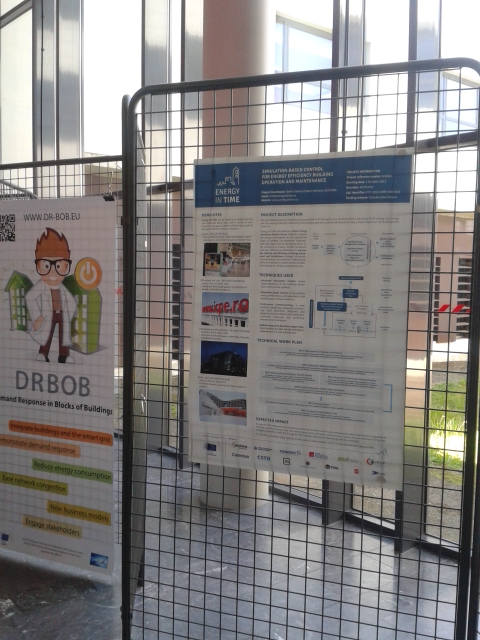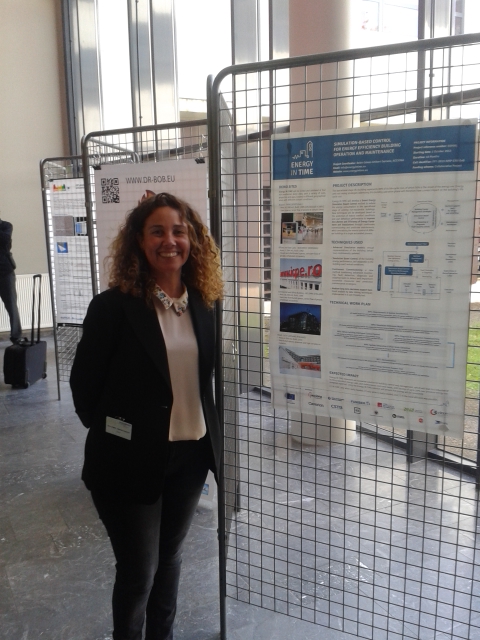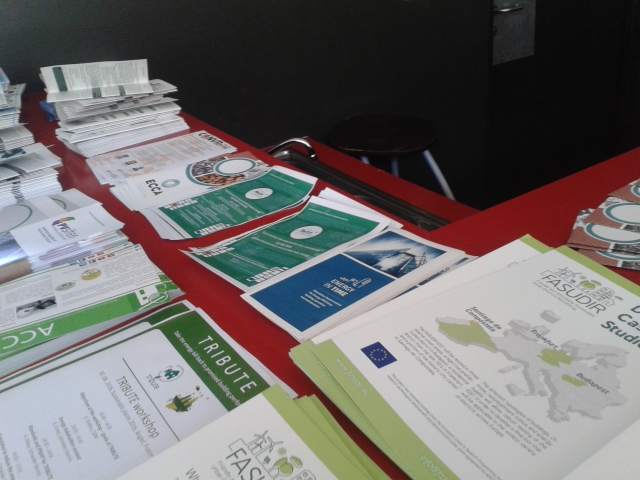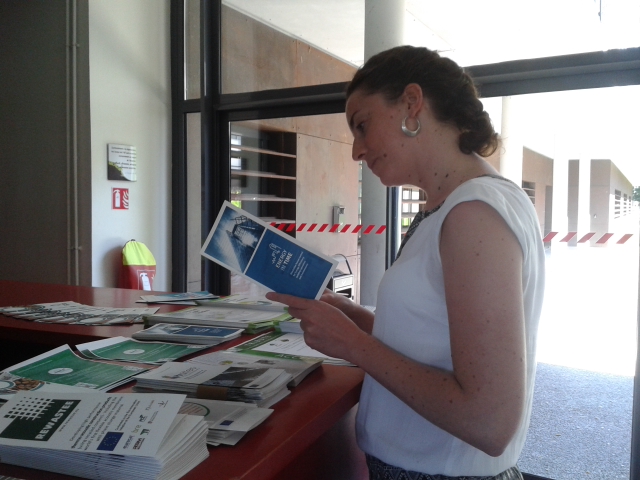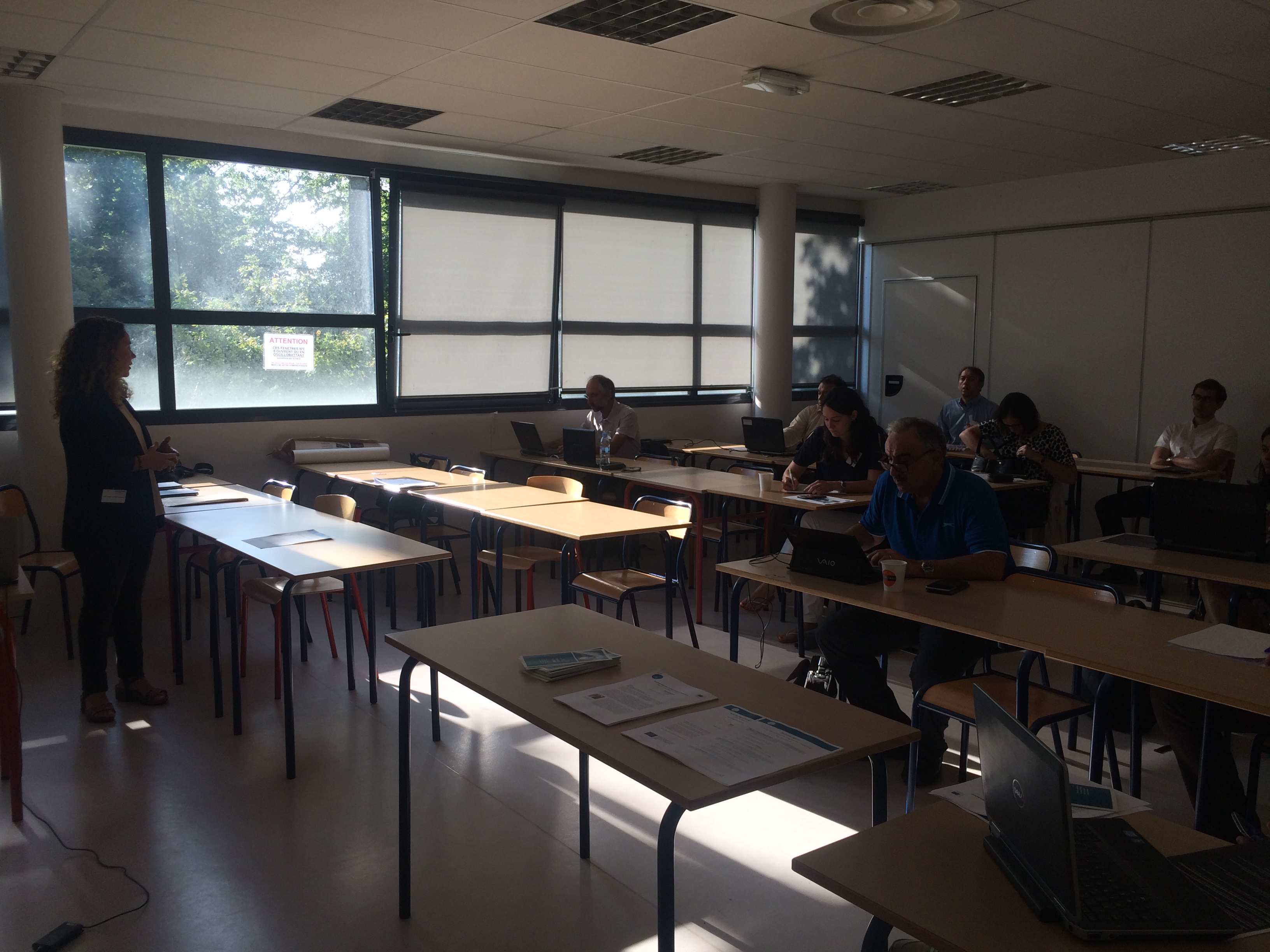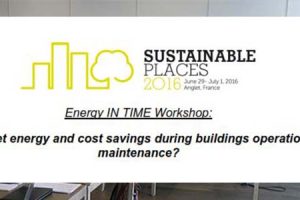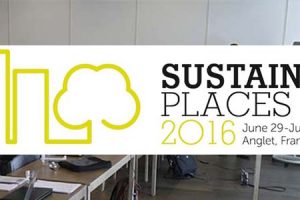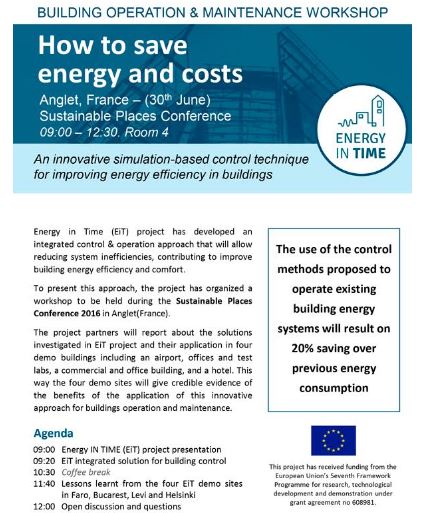How to get energy and cost savings during buildings operation and maintenance?
09:00
Energy IN TIME (EiT) project presentation:
Filling the gap between actual and predicting assumptions
Up to 90% of the buildings’ life cycle carbon emissions occur during their operational phase, mainly as consequence of the HVAC, lighting and appliances’ energy use. This phase also represents 80% of building’s life-cycle cost of which 50% is consequence of the energy use. Therefore, energy and cost saving strategies addressing the building operation phase have a major impact in the building life cycle cost.
The European project Energy IN TIME (EiT), started in October 2013 and funded by European Commission, is developing a Smart Energy Simulation-Based Control method to reduce the energy consumption and energy bill in the operational stage of existing non-residential buildings. The new techniques are based on the prediction of indoor comfort conditions and user behavior performance to improve the lifetime and efficiency of energy equipment and installations through continuous commissioning and predictive maintenance. A control tool will be implemented in the building energy management systems to be automatically and remotely operated. Additionally, four demo sites will give credible evidence of the benefits of the application of this innovative approach for buildings operation and maintenance. The use of these control methods to operate existing building energy systems will result on 20% saving over previous energy consumption.
About the speaker
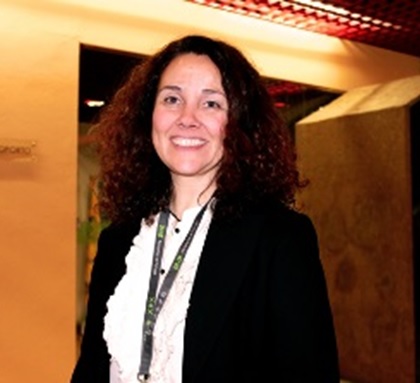
Engineer by the University of Sevilla. She is part of the installations department at ACCIONA R&D as In-House Consultant. She has worked on engineering field, carrying out projects related to Renewable Energy Sources and Energy Efficiency. She has experience in coordinating European funding Programs as she was involved in the set up of Münchner Energy Agentur and Agencia Local de Sevilla under the SAVEII Program. She is participating at several EU R&D projects in energy efficiency and RES fields like Messib, and some projects at national scope like EDEArenov, also in energy efficiency in building field.
09:20
EiT integrated solution for building control
The buildings’ energy demand and consumption is influenced by internal and external factors to the building. Different aspects such as design, construction materials, climate, building usage or users’ behaviour, directly affect energy performance. Normally, these factors are strongly considered at the building design and planning stage. However, operational plans are usually based on fixed schedules, sometimes manually modified by operators, which do not use the knowledge of changing conditions to improve the design of operational plans.
Energy simulations and calculations done at the design stage (at theoretical level) will often differ from the actual energy performance of the building. The use of virtual operating models of the buildings allows for tightly calibrated building conditions at any point in time, enabling a realistic representation and simulation. This can be accomplished by updating the models with information obtained from the building monitoring.
This approach makes possible the prediction of building’s demand and operation conditions providing low deviation with respect to the actual conditions. Additionally, other kind of information such as weather forecasts and building occupancy can be loaded in the models, obtaining predictions closer to the reality. Taking into account the state of the simulation it is possible to design highly efficient operational plans.
After implementing the operational plans, the Simulation Based Control will correlate inputs provided by simulations with the actual information obtained from the building monitoring. Then, the Simulation Based Control, through the deviations detected by comparison, will be able to identify building zones or equipment where a sub-optimal performance is occurring. The Simulation Based Control will analyse the causes for these system inefficiencies and implement the corrective measures required.
Model On-Demand Control adjusts the optimal operational plans deviations due to changes in real-time external/internal data compared to the forecasted data used. Deviations between operational plans and real operation due to changes in equipment performance will be detected and treated by Fault-Adaptive Control.
Through analysis and exploitation of the historical data generated and stored on the EiT System new support tools for long term decision making and for medium term predictive maintenance are in development.
About the speaker
 Computer Engineer and researcher at the University of Granada where he obtained the MSc and PhD degrees in Computer Science. He has participated in several research projects related to data management. His research experience includes Intelligent Information Systems, Knowledge Representation, Semantic Web, Data Mining and Big Data. He has co-authored over 20 publications in international journals and conferences on these topics.
Computer Engineer and researcher at the University of Granada where he obtained the MSc and PhD degrees in Computer Science. He has participated in several research projects related to data management. His research experience includes Intelligent Information Systems, Knowledge Representation, Semantic Web, Data Mining and Big Data. He has co-authored over 20 publications in international journals and conferences on these topics.
09:30
Automatic operational plans generation
The development of operational plans based on energy management strategies requires certain information and technical knowledge that is not always available. Building operation anomalies cannot easily be detected without direct measurement of indoor and outdoor loads (which is not always feasible). Moreover, the impact assessment of alternative operational plans or corrective actions is usually not performed, unless considerable time and effort is spent in energy audits and/or simulations.
Simulation or Model Based Control can be used for maximizing the performance as well as improving the efficiency of building operational plans.
Taking a calibrated model representing the most accurate conditions of the building in a certain time frame and using advanced algorithms, it is possible to test the effect of different operational plans in the building, while minimizing energy consumption and associated cost and satisfying energy demand and comfort restrictions. The operational plan selected as the optimal for the building conditions, consists in a set of instructions (or setpoints) to be executed by the BEMS in a given future time period (the time for which the simulation is run). These instructions are nearly optimal in terms of pre-defined key performance indicators according to the expected building conditions for the operation period.
The building control policy can be adapted to the actual operating conditions, and to failure events by tuning the setpoints of the current operational plan. In this way, the impact of deviations between the predicted building conditions that led to the operational plan and the current building conditions is reduced.
About the speaker
 Computer Engineer and researcher at the University of Granada where he obtained the MSc and PhD degrees in Computer Science. He has participated in several research projects related to data management. His research experience includes Intelligent Information Systems, Knowledge Representation, Semantic Web, Data Mining and Big Data. He has co-authored over 20 publications in international journals and conferences on these topics.
Computer Engineer and researcher at the University of Granada where he obtained the MSc and PhD degrees in Computer Science. He has participated in several research projects related to data management. His research experience includes Intelligent Information Systems, Knowledge Representation, Semantic Web, Data Mining and Big Data. He has co-authored over 20 publications in international journals and conferences on these topics.
09:50
Building HVAC Fault Detection & Diagnostics
It is well studied that HVAC fault detection and diagnostics (FDD) has a huge potential for cost saving through efficient energy management, timely maintenance scheduling and increasing system up time. Numerous studies have been done to investigate the impact of automated fault detection and diagnostics algorithms in the context of energy savings and other benefits. For example: “poorly maintained, degraded and improperly controlled equipment wastes an estimated 15% to 30% of energy used in commercial buildings. Much of this waste can be prevented with wide spread adoption of automated condition based maintenance.” – Methods for Fault Detection, Diagnostics and Prognostics for Building Systems – A Review, Part 1. IJ HVAC&R, Vol. 11, No. 1, Jan 2005. As a part of the Energy IN TIME project United Technologies Research Center Ireland has developed a hybrid data and physics based methodologies to detect and diagnose faults in building HVAC components. The developed technologies were tested with real test building data with highly promising results.
About the speaker
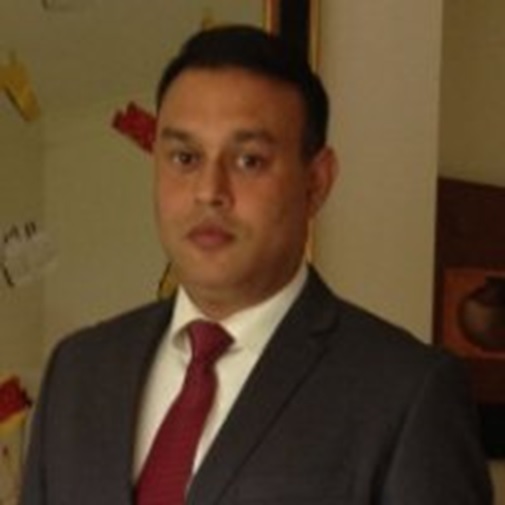 Dr. Anarta Ghosh is a Staff Research Scientist at United Technology Research Centre Ireland (UTRC-I). His fields of expertise are Data Analytic, Machine Learning and Computer Vision. His current research interests are: building energy management, system and equipment level fault detection & diagnosis and PHM (Prognostics and Health Management) in the aerospace domain. He has more than 13 years academic and industry experience in the field of decision support (machine learning, statistical pattern recognition data mining), cognitive computer vision and image/signal processing and over 20 publications in these areas in high impact journals and conferences.
Dr. Anarta Ghosh is a Staff Research Scientist at United Technology Research Centre Ireland (UTRC-I). His fields of expertise are Data Analytic, Machine Learning and Computer Vision. His current research interests are: building energy management, system and equipment level fault detection & diagnosis and PHM (Prognostics and Health Management) in the aerospace domain. He has more than 13 years academic and industry experience in the field of decision support (machine learning, statistical pattern recognition data mining), cognitive computer vision and image/signal processing and over 20 publications in these areas in high impact journals and conferences.
10:10
Fault-adaptive control for VAV damper stuc in a multizone building
Variable-air-volume (VAV) boxes are widely used in heating, ventilation and air conditioning (HVAC) systems of buildings as they offer energy efficient operation. Despite their great flexibility, VAVs are prone to failures and may impact adversely the energy consumption of the building and also the thermal comfort of zones. This presentation states a potential effective approach to fault adaptive control for damper stuck fault in the VAV box to achieve reduced energy consumption. The adaptation of the controller to the fault is achieved by online modification of the constraints in the model predictive control. The proposed fault-adaptive control law is discussed for a four-zones building benchmark.
About the speaker

Ms. Tejaswinee Darure is a PhD student in CRAN-CNRS, Université de Lorraine Nancy France. Her current research interest is energy optimization for large scale buildings with receding horizon control. She has completed masters in Process Control from College of Engineering Pune (COEP) India and have experience in industrial automation and control.
11:00
Decision support method for building mid-long term analysis
A prototype of decision support tool has been developed to help facility managers in designing and assessing mid-long term building energy renovation scenarii for the Faro airport pilot site. The methodology used in the tool includes: a) a dynamic energy simulation model (COMETh), b) a LCA method which reads EPD of construction products, and c) a LCC algorithm. These 3 models and methods exploit inputs extracted from a BIM file (quantities and metrics). Previously, a BIM file has been made for the terminal building of the FARO airport. Several decision criteria (8) are computed for each scenario: final annual energy consumption, total initial investment, net present value, global warming potential, total primary energy consumption, total waste, total water consumption and Return on investment (ROI). A scenario, also called alternative, is composed of maximum 13 elementary renovation solutions, suggested by the tool. DST is designed to be easy to use and to perform fast simulations (about 15s per simulation). Once batch simulations are over, detailed results are displayed, either tabular or graphical. Three multi-criteria ranking methods are embedded in the tool, as optional modules, to help the users to rank the selected alternatives.
The tool is developed in both C# and Python languages. The first one targets Facility managers with an easy-to-use GUI, the second targets R&D applications such as mono and multi-objective optimization algorithms.
About the speaker
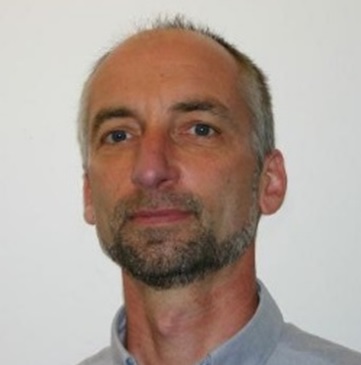 Research engineer– Dept. Head of I2L division. Benoit VINOT graduated as Engineer specialist in energy, construction and computer sciences. At CSTB, he worked on several national and European research projects on building energy modelling, advanced thermal design, and optimal control of combined passive and active system in low energy building.
Research engineer– Dept. Head of I2L division. Benoit VINOT graduated as Engineer specialist in energy, construction and computer sciences. At CSTB, he worked on several national and European research projects on building energy modelling, advanced thermal design, and optimal control of combined passive and active system in low energy building.
11:20
Data mining for improving building operation
Data Mining aims to build systems and algorithms to discover knowledge, detect patterns, and generate useful insights and predictions from large-scale data. It encompasses the whole data analysis process, which begins with data extraction and cleaning, and extends to data analysis, description, and summarization. The result is the prediction of new values and their visualization.
Data mining algorithms can be use to extract useful knowledge from the large amount of building and energy data collected during the operational stage.
Data Mining techniques are used to provide support and improve different aspects of Energy Efficiency and Management. We distinguish several categories:
(1) predicting the energy demand required for the efficient operation of a building;
(2) optimizing building operation;
(3) verifying the operational status and failures of building equipment and networks;
(4) analysing the economic and commercial impact of user energy consumption;
(5) detecting and preventing energy fraud.
About the speaker
Computer Engineer and researcher at the University of Granada where he obtained the MSc and PhD degrees in Computer Science. He has participated in several research projects related to data management. His research experience includes Intelligent Information Systems, Knowledge Representation, Semantic Web, Data Mining and Big Data. He has co-authored over 20 publications in international journals and conferences on these topics.
11:40
Lessons learnt from the four EiT demo sites in Faro, Bucarest, Levi and Helsinki
The presentation will summarize the actions performed at the Energy IN TIME demo sites, ranging from BMS modifications to metering improvements and energy auditing. Results and findings will be discussed, particularly with regards to the Finnish demo sites.
The Energy IN TIME project is divided into various modules, and the methodologies presented in the modules are applied to the demo sites. The presentation will give insight to how the project modules can be applied to actual buildings; one reference case being the fault diagnostics implemented to the variable air volume system in Sanomatalo, Helsinki.
About the speaker
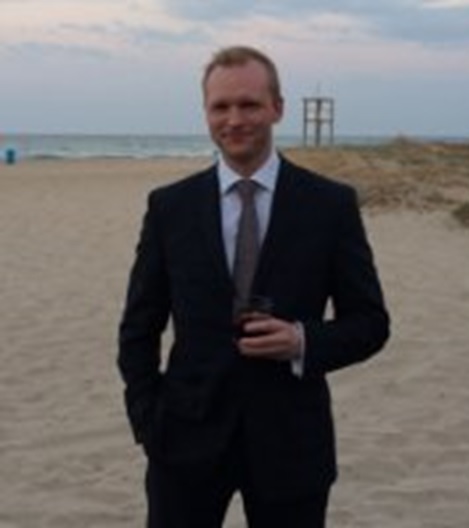 Heikki Rostila is working in the field of sustainable building maintenance and operations, as Business Unit Director at Caverion Suomi Oy. He holds a M.Sc. in energy economics, and is studying under the Doctoral Programme in Engineering at the Aalto University in Helsinki. He is involved in various projects related to the energy efficiency and life-cycle optimization of buildings, as well as technical asset management.
Heikki Rostila is working in the field of sustainable building maintenance and operations, as Business Unit Director at Caverion Suomi Oy. He holds a M.Sc. in energy economics, and is studying under the Doctoral Programme in Engineering at the Aalto University in Helsinki. He is involved in various projects related to the energy efficiency and life-cycle optimization of buildings, as well as technical asset management.
